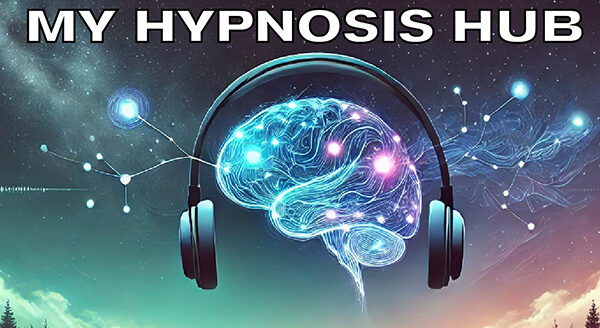The History of Hypnotherapy: From Ancient Rituals to Modern Science
The history of hypnotherapy is a fascinating journey that spans ancient civilizations, medieval mysteries, and modern scientific breakthroughs. Today, hypnosis is often embraced for pain management, habit change, and overcoming phobias—but its roots stretch back to religious rites, mystical practices, and early attempts at spiritual healing. How did a technique once linked to superstition become a well-regarded form of therapy in clinics and hospitals worldwide? In this post, we’ll traverse the centuries, highlighting the evolving perspectives on altered states of consciousness, the pioneers who shaped the field, and the scientific legitimacy that hypnotherapy holds today.
The History of Hypnotherapy: Ancient Practices and Spiritual Origins
Early Civilizations and Healing Trances
Hypnotherapy may feel like a relatively modern approach, but its concepts can be traced to ancient cultures across the globe. Egyptian, Greek, and Roman civilizations all documented rituals that aimed to induce trance states, often in the context of healing or divine communication. In Egypt, “sleep temples” provided a sanctuary where people sought cures through dreams and guided rest, foreshadowing the idea that one’s subconscious or internal spirit could be harnessed for well-being.
Greek Temples of Healing
The Greeks likewise used dream incubation, particularly at the Temple of Asclepius—the god of medicine. Pilgrims slept within the temple walls, expecting healing dreams or visions. These early rituals highlight a foundational principle in the history of hypnotherapy: the belief that deep relaxation and altered consciousness could trigger powerful physical and emotional healing.
The Middle Ages to the Renaissance: Shadows and Superstitions
Decline of Mind-Based Healing
The fall of the Roman Empire and the rise of the Middle Ages saw a shift: spiritual or mystical practices that weren’t sanctioned by church authorities were often branded as sorcery or heresy. Consequently, the use of trance states for healing dwindled, overshadowed by fear of witchcraft. Although pockets of folk healers persisted, these approaches lacked broader acceptance, and many went underground to avoid persecution.
Renaissance Science and the Mind
Europe’s Renaissance period (roughly 14th to 17th centuries) re-ignited curiosity about the natural world, including the human mind. While there wasn’t a direct revitalization of ancient hypnotic practices, intellectuals began exploring how imagination, suggestion, and symbolic rituals could influence health. In effect, the seeds were planted for a future re-emergence of the concepts underlying hypnotherapy.
The History of Hypnotherapy Enters the Modern Age
Mesmer and “Animal Magnetism”
When discussing the history of hypnotherapy in a modern context, many point to Franz Anton Mesmer (1734–1815) as a pivotal figure. An Austrian physician, Mesmer theorized that a force he termed “animal magnetism” flowed between all living and nonliving things. By manipulating this force, he believed he could cure various ailments. Mesmer’s dramatic séances, featuring rods and magnetic baths, captured Europe’s imagination—though his methodology eventually faced scientific scrutiny.
Legacy of Mesmer’s Techniques
Despite scientific dismissals of “animal magnetism,” Mesmer’s experiments laid groundwork for exploring trance-like states. Patients reported relief from chronic pain and psychosomatic issues, albeit through the power of suggestion rather than magnetism. Mesmer’s flamboyant style drew condemnation from the medical establishment, but his focus on suggestion and psychological influence was crucial to the emerging field of what would become hypnotherapy.
James Braid: The Father of Modern Hypnotism
Breaking Away from Mesmerism
James Braid (1795–1860), a Scottish surgeon, grew skeptical of Mesmer’s magnetic theories. In the 1840s, after observing Mesmeric demonstrations, Braid proposed that the curative effects resulted not from mystical forces but from a mentally-induced trance. He coined the term “hypnotism” (from the Greek “hypnos,” meaning sleep), though he later tried, unsuccessfully, to rename it “monoideism” to emphasize the single-focused attention rather than actual sleep.
Braid’s Contributions to Hypnotherapy
Braid was the first to systematically explore and document the psychophysiological aspects of hypnosis. He performed surgeries and minor operations using hypnosis as an anesthetic, showcasing its practical medical application. His research and publications offered a more scientific framework, gradually earning hypnosis a measure of respectability in medical circles.
The Nancy School vs. The Salpêtrière School
A Philosophical Divide
France in the late 19th century became a hotbed for debates on hypnosis. On one side was the Nancy School, led by Ambroise-Auguste Liébeault and Hippolyte Bernheim, who contended that hypnosis was a normal psychological phenomenon accessible to everyone. They believed suggestion played the most critical role in achieving therapeutic benefits.
On the other side, Jean-Martin Charcot at the Salpêtrière Hospital in Paris viewed hypnosis as a pathological state, only found in individuals with hysteria or other mental disorders. This philosophical rift influenced how hypnosis was studied and perceived, with the Nancy School’s inclusive understanding eventually winning broader acceptance.
The Role of Suggestion
Despite their differences, both schools underscored the potency of suggestion in shaping hypnotic responses—a principle that remains central to modern hypnotherapy. Whether you lean toward the Nancy School’s viewpoint of universal susceptibility or Charcot’s more selective perspective, the recognition that suggestion could influence bodily and mental processes was a landmark in the history of hypnotherapy.
Freud’s Exploration and Departure
Freud’s Initial Enthusiasm
Sigmund Freud, the founding father of psychoanalysis, initially incorporated hypnosis into his therapeutic arsenal after studying with Charcot. He recognized hypnosis could uncover subconscious memories and traumas. However, Freud soon abandoned hypnotic techniques in favor of free association and dream analysis, shaping the direction of early psychotherapy.
Impact on Mainstream Psychotherapy
Freud’s pivot led many to view hypnosis as secondary to his psychoanalytic approach, temporarily sidelining it from mainstream psychology. Still, the foundation he built on unconscious drives laid the groundwork for future practitioners to resurrect and refine hypnosis as a therapeutic tool.
20th Century Advances: From War Trauma to Clinical Settings
World Wars and Hypnotherapy
During World Wars I and II, hypnosis found a renewed purpose in treating soldiers suffering from “shell shock,” known today as post-traumatic stress disorder (PTSD). Therapists employed hypnosis to manage acute anxiety, nightmares, and other symptoms of war trauma. These successes showcased hypnosis’s potential in addressing severe emotional distress, spurring more systematic research.
Medical and Dental Anesthesia
In the mid-20th century, individuals like Dr. John Elliotson and Dr. Esdaile used hypnoanesthesia for surgical procedures, from amputations to dental extractions. Although local and general anesthetics eventually overshadowed hypnosis for pain control, these pioneers demonstrated that mental focus could significantly reduce or even eliminate pain perception.
Modern Acceptance and Integration
Cognitive-Behavioral Influence
As cognitive-behavioral therapy (CBT) rose to prominence, many therapists began integrating hypnotic suggestions into CBT frameworks. This blend, often termed “cognitive hypnotherapy,” treats phobias, addictions, and other disorders by leveraging both conscious cognitive strategies and subconscious reprogramming. By fusing the best of both worlds, modern hypnotherapy can offer deeper and more lasting results.
Research and Legitimization
Recent decades have seen a surge in peer-reviewed studies examining hypnosis for everything from irritable bowel syndrome (IBS) to chronic pain. Brain-imaging research has also illuminated changes in neurological activity during hypnosis, lending further legitimacy to the field. Hypnotherapy is no longer confined to carnival acts or fringe spiritual practices; it has anchored itself in clinical and academic circles as a credible, evidence-based therapy option.
The History of Hypnotherapy in the Digital Age
Online Sessions and Apps
With the internet revolution, hypnotherapy has expanded beyond the clinician’s office. Virtual sessions allow people worldwide to access qualified practitioners. Additionally, apps offering guided hypnosis tracks have proliferated, bringing relaxation and self-improvement tools directly to smartphones. While these digital platforms aren’t a complete substitute for personalized care, they represent the evolution and democratization of hypnosis.
Public Awareness and Demand
Celebrities and high-profile athletes openly discussing their positive experiences with hypnosis have further propelled its popularity. Whether it’s a Hollywood star quitting smoking or a tennis champion improving focus, these anecdotes highlight hypnosis’s adaptability. The public increasingly views hypnotherapy as a valuable resource for tackling common challenges—weight loss, confidence building, or stress reduction—rather than a mysterious or suspicious practice.
Key Players in Modern Hypnotherapy
Milton H. Erickson
Milton Erickson (1901–1980) is considered one of the most influential figures in modern hypnotherapy. Paralyzed by polio as a teenager, Erickson developed heightened observational skills and an intuitive approach to suggestion. He favored indirect and conversational techniques, tailoring each session to the client’s unique language patterns and life context. His work spurred the “Ericksonian hypnosis” style, still widely taught and practiced today.
Dave Elman
Dave Elman (1900–1967), initially a stage performer, contributed significantly to clinical hypnosis by perfecting rapid induction methods. Elman’s technique—often involving guided relaxation and a series of suggestions—proved successful in medical and dental anesthesia, further cementing the utility of hypnosis in mainstream medicine.
The Ongoing Evolution of Hypnotherapy
Incorporation into Psychotherapy
Today, many psychologists, counselors, and psychiatrists incorporate hypnotherapy into broader treatment plans. Rather than a standalone discipline, hypnosis often complements interventions like dialectical behavior therapy (DBT) or acceptance and commitment therapy (ACT). This collaborative style emphasizes that hypnotherapy is one piece of a holistic mental health puzzle.
Ethics and Professional Standards
Modern professional bodies, such as the American Society of Clinical Hypnosis (ASCH) and the British Society of Clinical Hypnosis (BSCH), uphold ethical standards and offer certifications. These organizations help differentiate evidence-based practitioners from hobbyists, ensuring clients receive safe, responsible care.
Future Frontiers
As neuroscience advances, we may gain even deeper insights into how hypnosis can restructure neural pathways associated with anxiety, addiction, or depression. Virtual reality (VR) hypnosis is another frontier, where simulated environments can facilitate even more immersive therapeutic experiences. The bottom line? Hypnotherapy continues to evolve, guided by centuries of wisdom yet always open to fresh innovation.
Conclusion: Reflecting on the History of Hypnotherapy
The history of hypnotherapy is a tapestry woven from ancient rituals, 18th-century spectacle, and 21st-century science. What began as mystical rites in Egyptian temples and Greek sanctuaries has matured into an established clinical practice recognized for its ability to influence the subconscious mind. Along the way, pioneers like Mesmer, Braid, Erickson, and Elman contributed theories, techniques, and credibility, each layer shaping hypnotherapy into the versatile, respected field it is today.
Whether you seek hypnotherapy for managing anxiety, overcoming a phobia, or breaking a stubborn habit, you’re part of a long lineage of individuals who have tapped into altered states to foster healing and transformation. The next chapter in the story of hypnotherapy remains unwritten—one that may see new technologies and research refining how we understand and harness the hypnotic trance. Yet the core principle will remain: the mind’s power to heal, guided by skillful suggestion and a receptive spirit.
For more insights on harnessing the power of your mind to conquer stage fright, social anxiety, or performance challenges, explore our Public Speaking Resources. Whether you’re a seasoned speaker or just starting to find your voice, these resources can guide you toward greater confidence and impactful communication.

